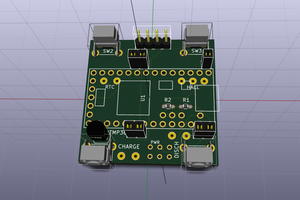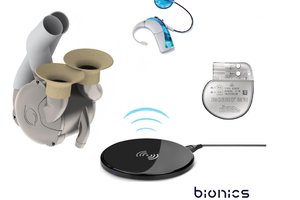Hardware:
Microcontroller: Attiny85
Battery: LIR-2032
Features:
The version of the device shown is the v1 device, I've ordered the v2 device (all components on top, only 3 emitters) and will hopefully have it assembled soon.
The Attiny85 is in sleep mode for the majority of the time, and only runs when the button is pressed.
The device is exactly 1"x1" in size, only slightly larger than the coin cell battery.
The device has a single red indicator LED, that flashes once every time an IR signal is emitted, then flashes three times in quick succession when the transmitting is done.
The device has 3 side facing IR emitters, which cover nearly a 180 degree field of view. Originally I had all six IR emitters populated, but combined they drew 130mA when on, which is above the recommended 70mA in the battery datasheet. Although 70mA is listed as the maximum constant current, I didn't want to risk damaging the battery.
I plan on running some more in depth battery life tests when I have access to an oscilloscope.
 Nicholas Junker
Nicholas Junker





 Christoph
Christoph
 Matias N.
Matias N.

 Stefan Wagner
Stefan Wagner
Awesome project!